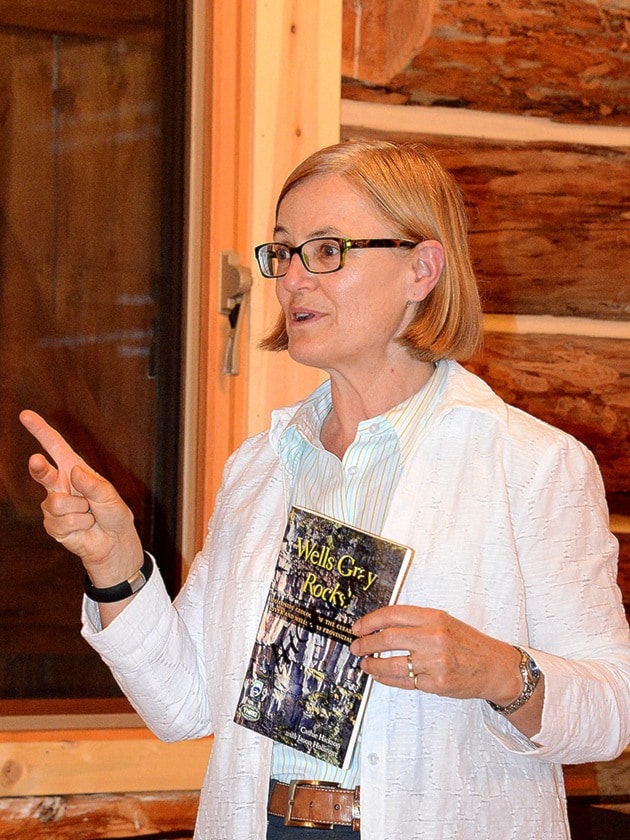“By Sunday you're going to be a vulcanologist too.”
That was the promise of Dr. Cathie Hickson as she began a 2 1/2 day workshop on the volcanoes of Wells Gray Park Friday evening.
About three dozen people, most of them local but a few visitors as well, came to listen to her presentation.
Hickson's talk on Friday evening was followed by two field trips into the park on Saturday and Sunday.
Wells Gray Park and area have about 200 “young” volcanoes and similar features, she said.
“By young, I mean less than 2 million years old,” she added. “That might not seem young to us, but when you consider that the Earth is 4 1/2 billion years old, it's like a nanosecond.”
Just why the Wells Gray Volcanic Belt has so many volcanoes is not entirely clear.
It might have something to do with the fact that the crust is 40 – 60 km deep under the Rockies, but only 20 – 30 km deep further west. This creates stress and big, very deep faults.
Whatever the cause, volcanoes have been erupting here for millions of years. They take an amazing variety of shapes, but they all have basically the same chemistry.
“What we have here is basalt, basalt, and more basalt,” Hickson said.
Many of the volcanoes erupted when what is now the park was under two kilometers of ice and looked a lot like the Greenland icecap.
The best analogy today would be Iceland, where volcanoes erupt under glaciers even today.
At least 11 sub-glacial volcanoes have been identified in and near the park, including Pyramid Mountain, 52 Ridge, Hyalo Ridge, and the Three Gorges area.
The Three Gorges area, which is drained by First, Second and Third Canyon creeks, was formed 300,000 years ago when a glacier filled most of the Clearwater River Valley.
Lava running down from the side of mountain reacted explosively with the cold ice, creating large amounts of unconsolidated material in what is now called Sheep Track Bench.
What is now Murtle River began as a meltwater channel running under a glacier.
When Pyramid Mountain erupted, the channel was diverted southwards into a parallel track.
Cougar Creek, which flows between Helmcken Falls and the viewpoint, is what remains of the original meltwater channel.
About 500,000 years ago, lava formed a dam across the valley near Spahats Creek, creating a large lake.
Whitehorse Bluff formed when a volcano erupted under the lake.
During the field trips over the next two days, Hickson said she would take participants to all 11 of the geo-pile waypoints in her booklet, Wells Gray Rocks.
The waypoints and the booklet contain clues in one of two treasure hunts being held in Wells Gray Park this summer.
Clues for the second treasure hunt are in the booklet Treasure Wells Gray, written by Trevor Goward.
First prize for both treasure hunts is an original painting of a bald eagle by wildlife artist Robert Bateman.
Other prizes are paintings of scenes in Wells Gray Park by local artist Doris Laner.
Winners will have the choice of taking a cash award instead of a painting.
